Are you constantly hearing the popping and cracking sound on Mac?
The quality of Macbook speakers has always been one of the best speakers on a laptop. Not just because they’re loud and clear, but also their front position prevents users from covering them. Still, they are prone to issues once in a while, such as iPhone Calls Not Ringing on Mac, distorted audio, crackling sounds, and so on.
In fact, the popping and cracking sound on Mac has been there since OS X Mavericks, and still, Apple hasn’t found a way to fix it once and for all. The problem could occur both due to hardware and software-related issues. But don’t worry. We’ll help you diagnose the cause and troubleshoot the issue with the methods listed below.
So let’s get started right away!
1. Clean the Speaker.
Over time, the surface of your computer’s speakers may collect dust particles, resulting in a popping and crackling sound on Mac. However, this is easily fixed by cleaning the speaker surface to remove dust and debris blocking the small holes.
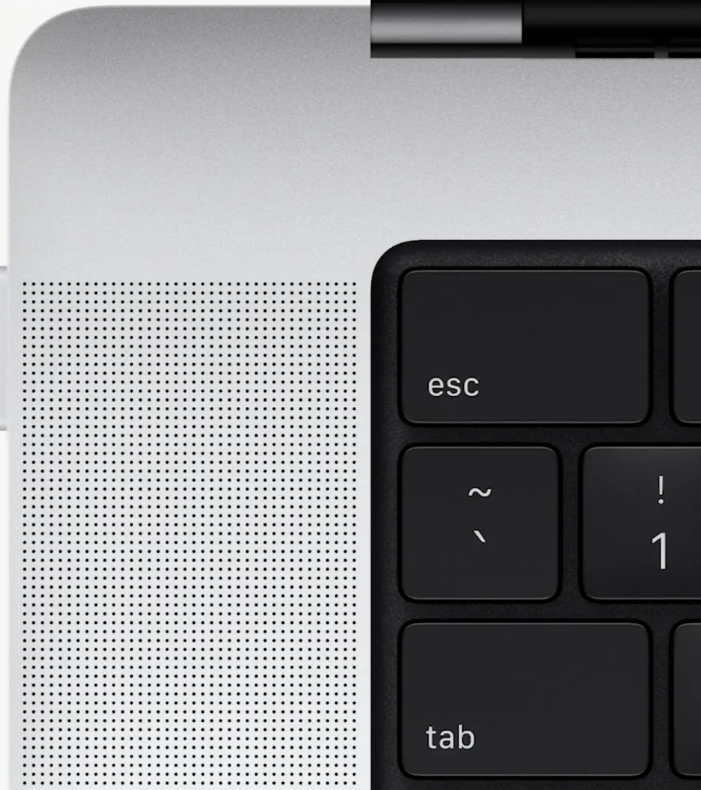
To do so, use a microfiber cloth to clean the dust particles and rubbing alcohol to wipe out any grime stuck on the speaker holes. Allow the speakers to air dry and check if the crackling sound has gone.
3. Force Restart Your Mac.
Unexpected bugs in your computer’s software result in issues that could also affect the hardware components. Thus, it’s possible that the popping and cracking sound on Mac is due to a temporary bug in your system. Frequently, they can be eliminated by simply force rebooting your Mac.
Here’s how it’s done:
- Press and hold down the Power button or the Touch ID on your Mac, depending on the model you own.
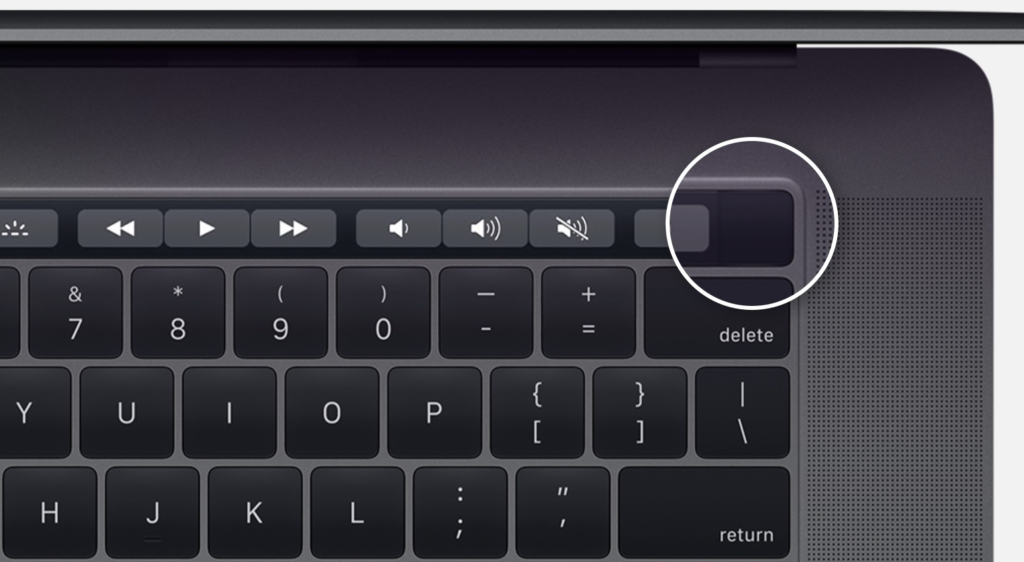
- Release it when the Apple logo appears on the screen. This should fix the popping and crackling sound on Mac.
4. Update Your macOS.
Software bugs also lead to the popping and crackling sound on Mac. These bugs often get eliminated via a version update. So if you have any macOS update pending, install it immediately to see if that resolves the issue.
Here’s how to do it:
- Firstly, go to the Apple menu at the top left corner and choose About This Mac.
- Then, click on the Software Update button.
- Wait for your Mac to check for any updates, and if it’s available, click the Upgrade Now button to begin the process.
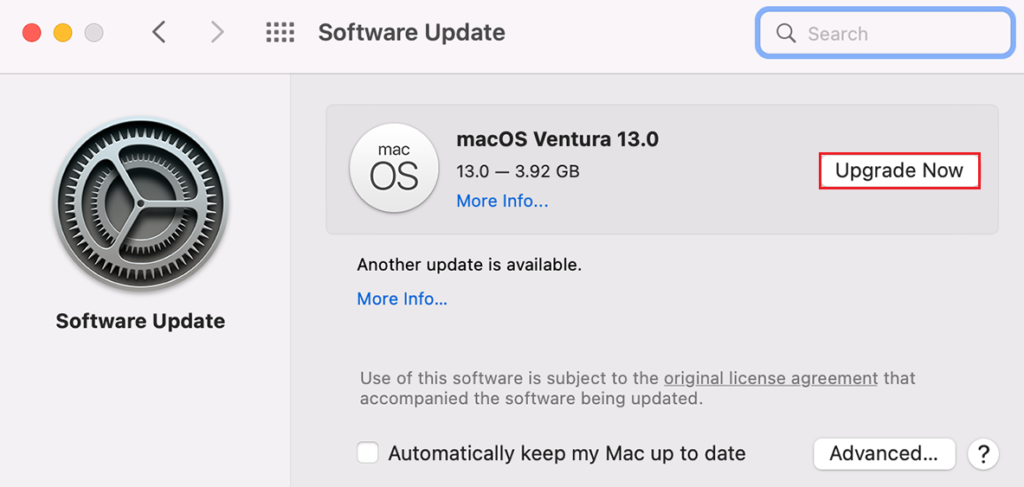
While following this method, make sure your Macbook has a sufficient battery. If not, put it on charge before installing the update. Moreover, connect to a strong internet connection and have enough storage on your Mac for the update to be successfully installed.
5. Lower the Volume Level.
Usually, speakers start producing popping and crackling sounds on Mac when the audio is playing at a high level, or it has higher frequencies. So, try lowering the volume level to around 70% by pressing the F11 shortcut key and see if that resolves the issue. Otherwise, move to the next method from this guide.
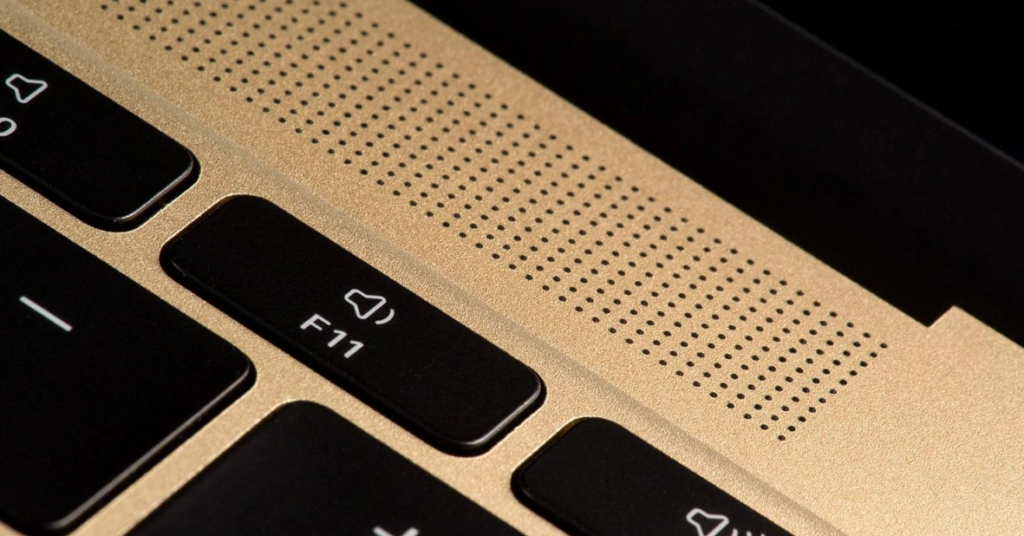
6. Quit Unnecessary Programs and Let Your Mac Cool Down.
If your MacBook’s temperature is increasing, this might be one reason why you’re hearing distorted audio or crackling sound. Applications with high CPU usage consume a lot of resources, which results in overheating of the internal components.
If you feel your Macbook is hotter than usual, shut it down and give it some time to cool down. If you’re using it outdoors, take it inside to bring its temperature down. Afterward, play any audio and check if the popping or crackling sound has vanished.
You could also quit the applications with high CPU usage by following the steps below:
- First, go to Finder from the dock.
- Next, click on the Applications tab on the right pane.
- Once there, double-click on the Utilities folder.
- Now, double-click on Activity Monitor to launch it.
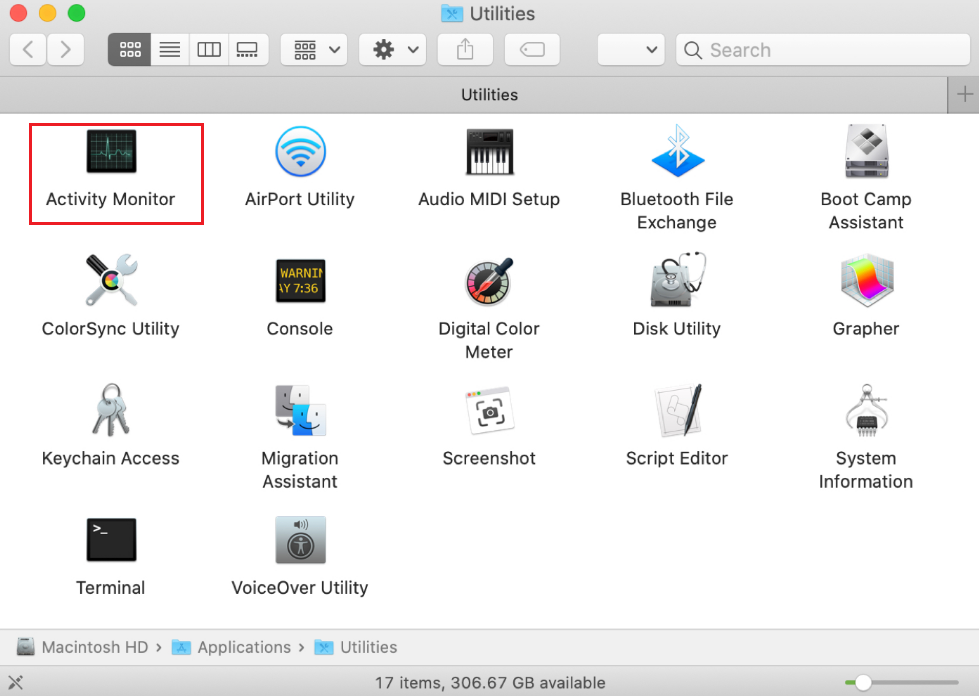
- When it opens, go to the CPU tab.
- Click on the CPU column to arrange the running applications based on their CPU consumption rate.
- If you want to close an application, first select it.
- Then, click on the x icon at the top.
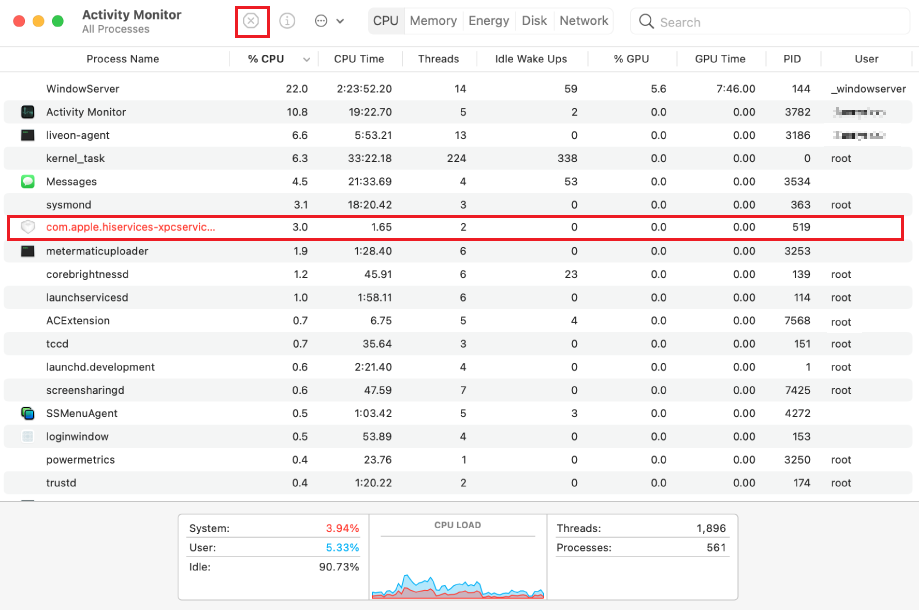
- Finally, choose Quit from the dialog box that appears afterward.
The popping and crackling sound on Mac should be successfully solved.
7. Change the Output Sound Format.
Macbooks allow users to choose a preferred sample rate for the output audio. If the selected format cannot adjust to varying frequencies of the sound format, you might hear the popping and crackling sound on Mac. Changing this sample rate could fix this issue.
To do so, follow the instructions below:
- Begin by pressing Command and Spacebar keys simultaneously to bring up the Spotlight Search.
- Type ‘Audio MIDI Setup’ and click on the first result that shows up.
- When a new window opens, go to the Macbook Speakers tab from the left pane.
- On the right pane, open the drop-down menu for Format and choose a frequency different from the one already selected.
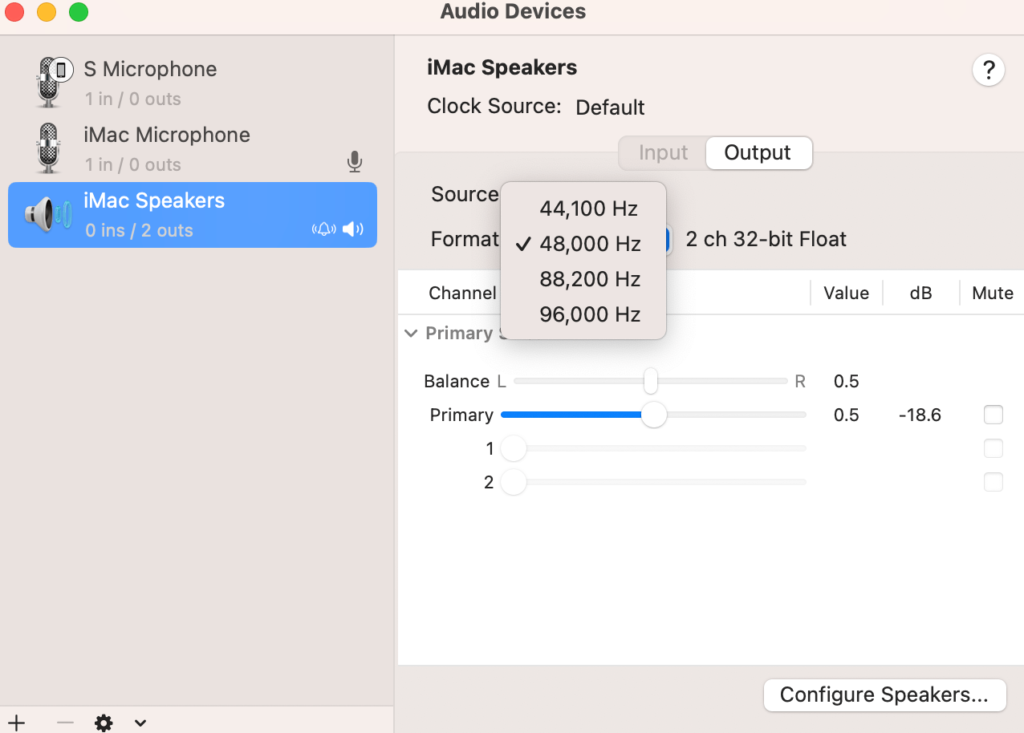
Now, quit the Audio MIDI Setup window and play audio to check if the issue has been resolved. Otherwise, move to the following method from this guide to troubleshoot your problem.
8. Remove Corrupted Audio Files.
Plist files, also called property list files, are used by Mac to save preferences and configuration settings of multiple programs and apps. Sometimes, these files may become faulty and cause various issues, such as popping and crackling sounds on Mac.
You can fix this issue by deleting these corrupted audio files from your Macbook. To do so, below are the steps you must follow:
- To start, go to Finder.
- Next, click on the Go tab on the menu bar and choose Computer.
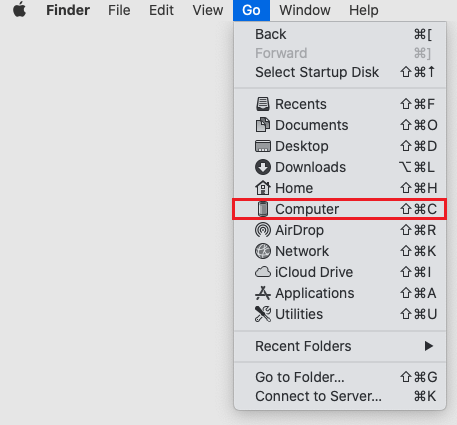
- Now, select your volume, e.g. Macintosh HD.
- There, open the Library folder and go to Preferences.
- Then, go to Audio.
- Move the following files to your Desktop:
com.apple.audio.DeviceSettings.plistcom.apple.audio.SystemSettings.plis
If that fixes the popping and cracking sounds on your Mac, delete the files you moved to your desktop. However, if it doesn’t, move them back to their original location.
9. Reset the NVRAM.
NVRAM is a memory type in your computer that stores settings and data related to volume, startup disk selection, etc. Resetting it will clear the memory and could help resolve the stated issue.
Here’s how to do it:
- First, shut down your computer by going to the Apple menu and choosing Shut Down.
- After that, boot up your Macbook and, at the same time, press and hold the Command + Option + P + R keys simultaneously for about 20 seconds.
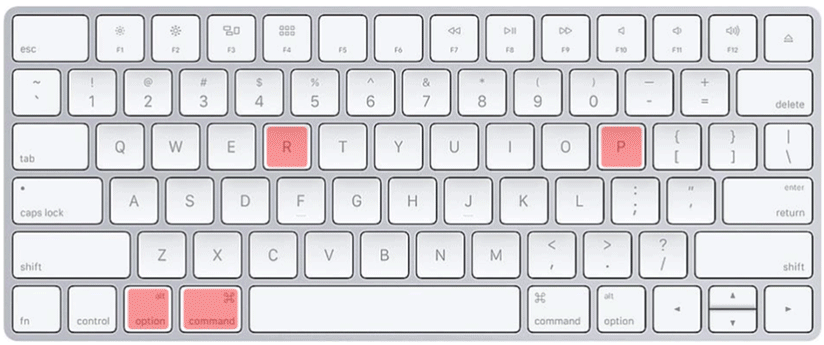
- Release them when the Apple logo appears on the screen.
10. Visit the Apple Store.
If all the stated methods don’t fix the issue, there is a high chance your Mac suffers from a hardware problem. We recommend you take your device to the nearest Apple store to diagnose the issue and receive technical assistance.
This wraps up our guide on how to fix the popping and crackling sound on Mac. If you still have any questions, feel free to deliver them to us via the comment section below. We’ll be happy to provide further assistance on the matter.
If this guide helped you, please share it. 😊





